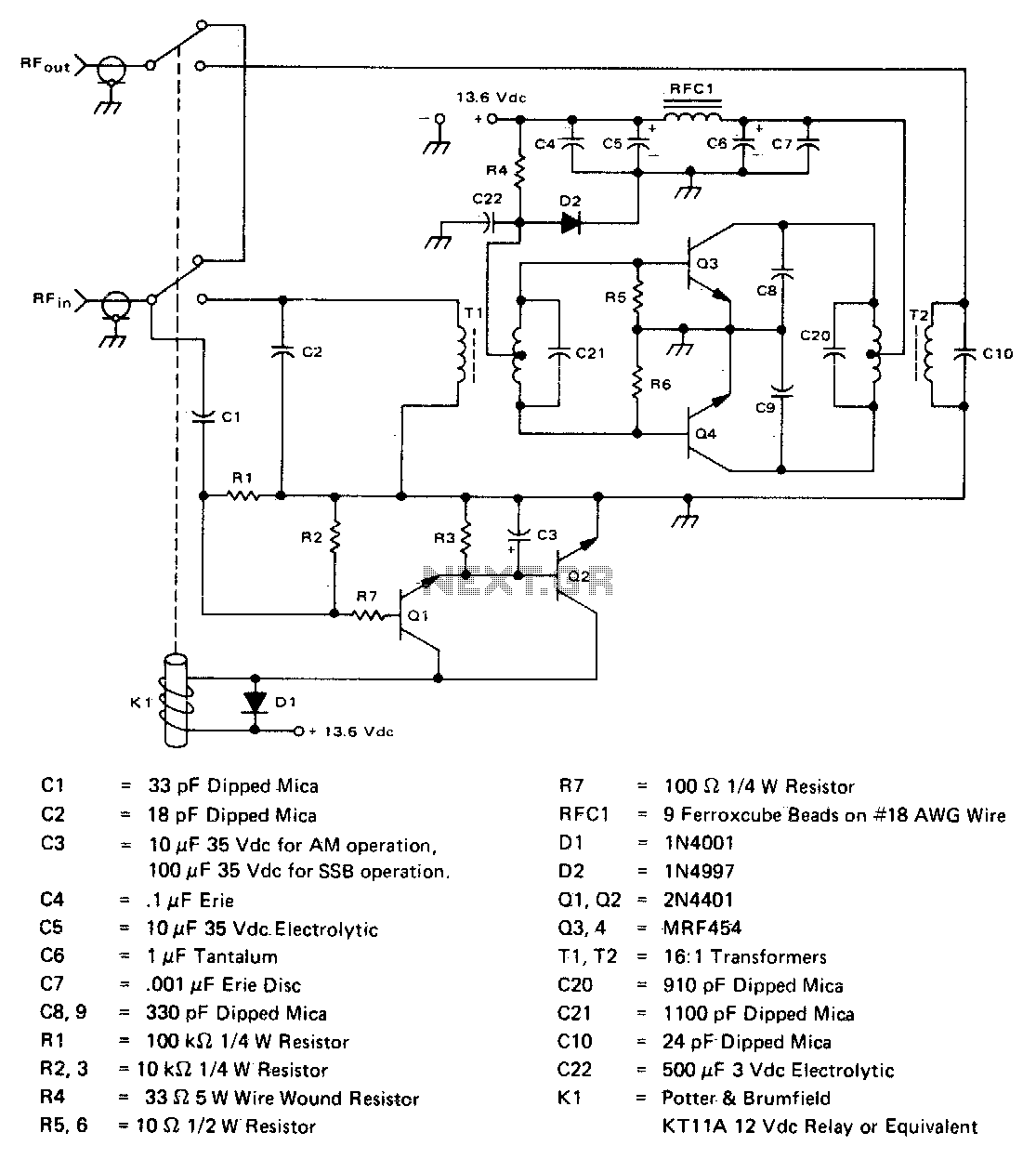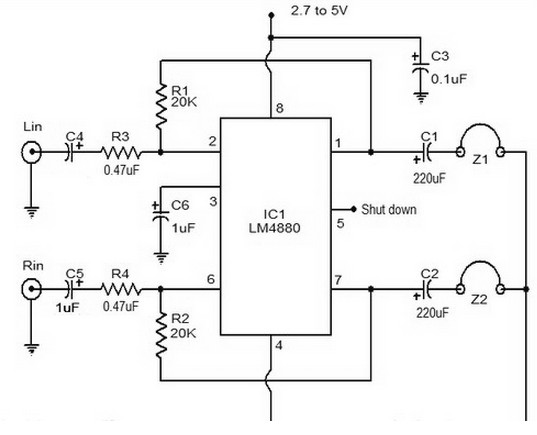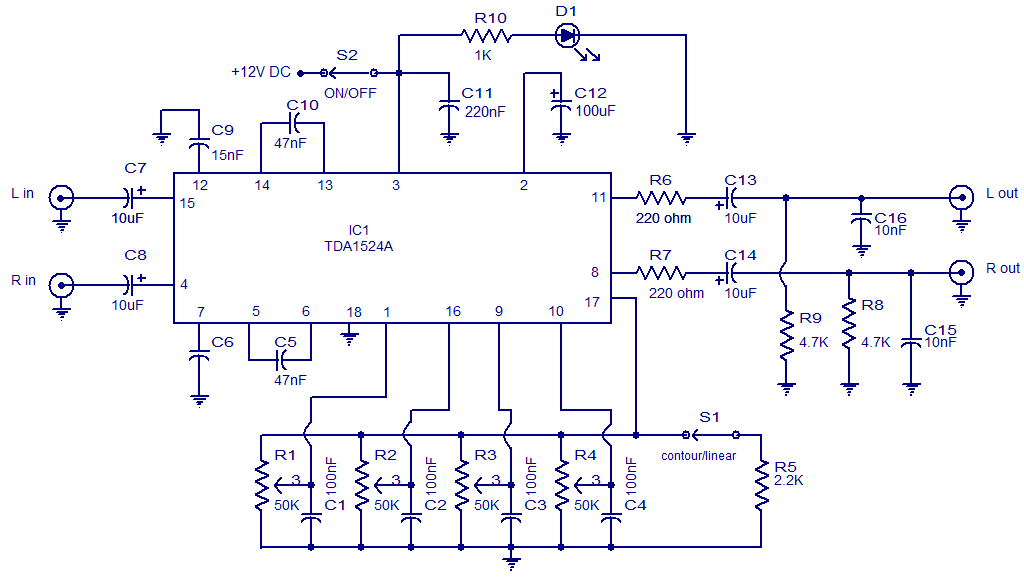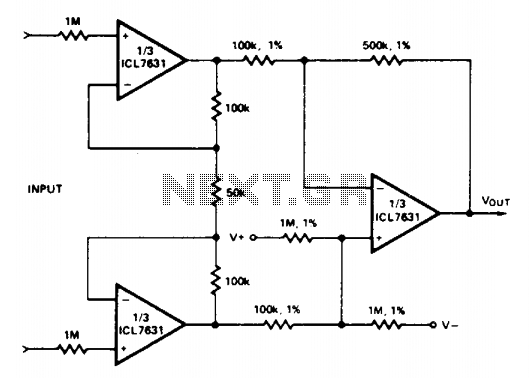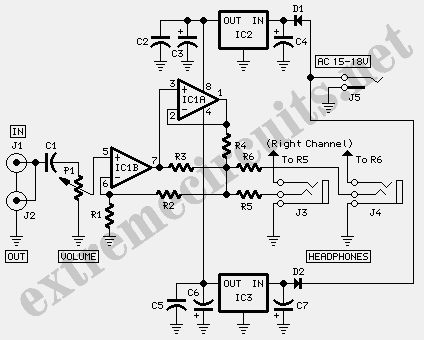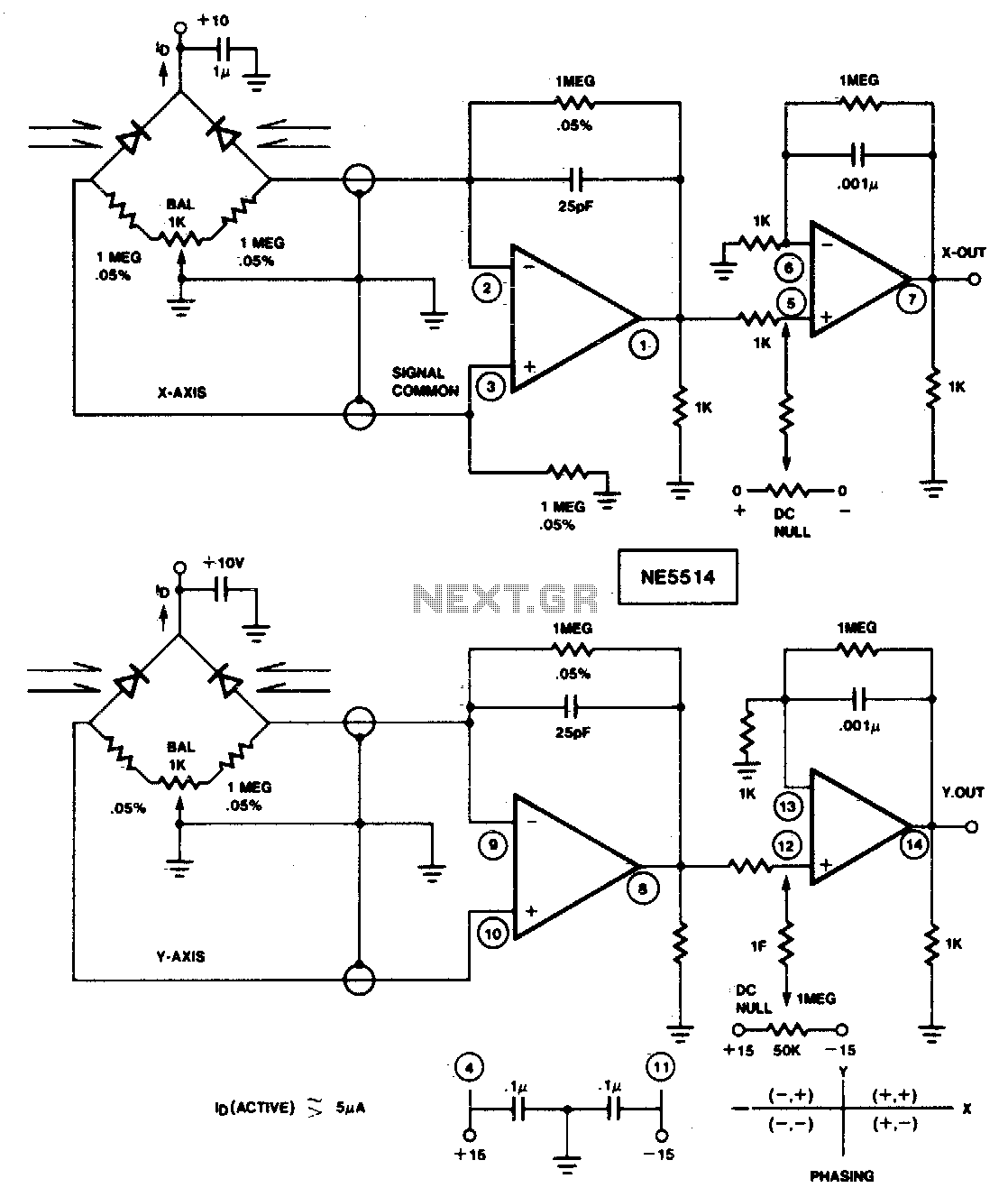
Telephone Amplifier
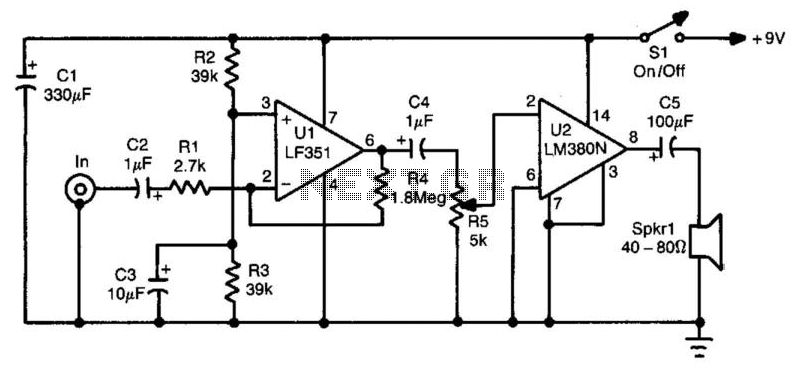
This amplifier is suitable for telephone applications or situations where a straightforward speech amplifier is necessary. The frequency response can be adjusted by changing the values of capacitors C2 and C4, and by adding a capacitor across resistor R4 (approximately 33 pF for the voice band) to restrict the high-frequency response.
The described amplifier circuit is designed to enhance audio signals, particularly in communication systems such as telephony. It typically employs a configuration that includes operational amplifiers or transistors to achieve the desired gain and frequency response characteristics.
The frequency response of the amplifier can be tailored by selecting appropriate values for capacitors C2 and C4. These capacitors are integral in shaping the amplifier's bandwidth and ensuring that it effectively amplifies the desired speech frequencies while attenuating unwanted high-frequency noise. For example, increasing the capacitance of C2 may lower the cutoff frequency, allowing more low-frequency signals to pass through, which is beneficial for capturing the nuances of human speech.
Moreover, the addition of a capacitor across resistor R4 serves to limit the high-frequency response of the amplifier. By specifying a capacitor value of approximately 33 pF, the circuit can effectively filter out frequencies that are beyond the voice band, which typically ranges from 300 Hz to 3 kHz. This filtering is crucial in maintaining clarity and intelligibility in speech signals, thereby enhancing the overall performance of the amplifier in telephone applications.
In summary, the amplifier's design allows for flexibility in frequency response adjustments through the careful selection of component values, ensuring optimal performance for speech amplification tasks. This amplifier can be used in telephone work or where a simple speech amplifier is required. The frequency response can be varied by the value of C2, C4, and addition of a capacitor across R4 (« 33 pF for voice band) to limit the HF response.
The described amplifier circuit is designed to enhance audio signals, particularly in communication systems such as telephony. It typically employs a configuration that includes operational amplifiers or transistors to achieve the desired gain and frequency response characteristics.
The frequency response of the amplifier can be tailored by selecting appropriate values for capacitors C2 and C4. These capacitors are integral in shaping the amplifier's bandwidth and ensuring that it effectively amplifies the desired speech frequencies while attenuating unwanted high-frequency noise. For example, increasing the capacitance of C2 may lower the cutoff frequency, allowing more low-frequency signals to pass through, which is beneficial for capturing the nuances of human speech.
Moreover, the addition of a capacitor across resistor R4 serves to limit the high-frequency response of the amplifier. By specifying a capacitor value of approximately 33 pF, the circuit can effectively filter out frequencies that are beyond the voice band, which typically ranges from 300 Hz to 3 kHz. This filtering is crucial in maintaining clarity and intelligibility in speech signals, thereby enhancing the overall performance of the amplifier in telephone applications.
In summary, the amplifier's design allows for flexibility in frequency response adjustments through the careful selection of component values, ensuring optimal performance for speech amplification tasks. This amplifier can be used in telephone work or where a simple speech amplifier is required. The frequency response can be varied by the value of C2, C4, and addition of a capacitor across R4 (« 33 pF for voice band) to limit the HF response.
